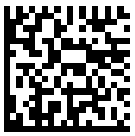I grew up in a family of teachers, my father was a teacher and I know very well the importance of a teacher both in life and in studies. Studying is a process that takes a significant part of our life. I think that every person needs the help of teachers during this long process. The teachers have p...
Check your IELTS writing task 1 and essay, this is a free correction and evaluation service.
Check IELTS Writing it's free


IELTS Writing Answer Sheet
Candidate Name:
Preet Raman
Center Number:
1
2
3
4
Candidate Number:
3
7
7
0
Module (shade one box):
Academic:
General Training:
Test Date:
0
D4
D1
M2
M2
Y0
Y2
Y2
YDescribe Raynaud phenomenon
Describe Raynaud phenomenon nyRqK
Raynaud phenomenon is a disease characterized by exaggerated vasoconstriction most commonly seen in digits and toes, especially by cold temperature. Majority of patients are females, of younger age of groups, or having family history of Raynaud phenomenon. Raynaud phenomenon has two subtypes: primary Raynaud phenomenon, which has no clear cause, and secondary Raynaud phenomenon with established causes such as autoimmune rhematic diseases, hypothyroidism, and carpal tunnel syndrome.
The spectrum of the disease is wide, ranging from painless discoloration of skins, pain from excessive vasoconstriction to ischemia and necrosis of appendages, especially secondary Raynaud phenomenon due to the physical structures of blood vessels are obliterated by repeated inflammation.
Treatments of Raynaud phenomenon include non-pharmacological interventions: keeping digits and toes warm, avoidance of drugs with vasoconstriction, and smoking cessation. Most primary Raynaud phenomenon patients' symptoms can be managed by only these lifestyle modifications, unlike secondary Raynaud phenomenon. In addition to the previously mentioned treatment, these patients will also need drugs such as calcium channel blockers (nifedipine and amlodipine), PDE-5 inhibitors (sildenafil), and supplements (niacin and antioxidants. ) The treatment goal is to improve the quality of life.
Most primary Raynaud phenomenon can reach the stage of remission within 7 to 14 years, in contrast, secondary Raynaud phenomenon will not subside until the underlying diseases are properly controlled.
Raynaud
phenomenon
is a disease
characterized by exaggerated vasoconstriction most commonly
seen
in digits and toes, especially
by cold
temperature. Majority of patients are females, of younger age of groups, or having family history of Raynaud
phenomenon
. Raynaud
phenomenon
has two subtypes: primary Raynaud
phenomenon
, which has no clear
cause, and secondary
Raynaud
phenomenon
with established causes such as autoimmune rhematic
diseases
, hypothyroidism, and carpal tunnel syndrome.
The spectrum of the disease
is wide, ranging from painless discoloration of skins, pain from excessive vasoconstriction to ischemia and necrosis of appendages, especially
secondary
Raynaud
phenomenon
due to the physical structures of blood vessels are obliterated
by repeated inflammation.
Treatments of Raynaud
phenomenon
include non-pharmacological interventions: keeping digits and toes warm, avoidance of drugs with vasoconstriction, and smoking cessation. Most primary Raynaud
phenomenon
patients' symptoms can be managed
by only
these lifestyle modifications, unlike secondary
Raynaud
phenomenon
. In addition
to the previously mentioned treatment, these patients will also
need drugs such as calcium channel blockers (nifedipine and amlodipine), PDE-5 inhibitors (sildenafil
), and supplements (niacin and antioxidants. )
The treatment goal is to improve
the quality of life.
Most primary Raynaud
phenomenon
can reach the stage of remission within 7 to 14 years, in contrast
, secondary
Raynaud
phenomenon
will not subside until the underlying diseases
are properly
controlled. Do not write below this line
Official use only
CC
5.5
LR
5.0
GR
6.5
TA
5.0
OVERALL BAND SCORE
5.0


IELTS essay Describe Raynaud phenomenon
👍 High Quality Evaluation | Correction made by newly developed AI |
✅ Check your Writing | Paste/write text, get result |
⭐ Writing Ideas | Free for everyone |
⚡ Comprehensive report | Analysis of your text |
⌛ Instant feedback | Get report in less than a second |
Raynaud
phenomenon
disease
Raynaud
phenomenon
Raynaud
phenomenon
Raynaud
phenomenon
secondary
Raynaud
phenomenon
rhematic
diseases
disease
secondary
Raynaud
phenomenon
Raynaud
phenomenon
Raynaud
phenomenon
secondary
Raynaud
phenomenon
sildenafil
)
Raynaud
phenomenon
secondary
Raynaud
phenomenon
diseases
Copy promo code:GM2oR
CopyRecent posts
- Is it easier for you to study on your own or with teachers, explain why?
- sources of bad habit lazinessThe topic that I would love to discuss with you today in this essay is laziness. So what is the source of this bad habit? What kinds of behaviors do we need to change and practice in order to be productive? First of all, every bad habit starts with your way of thinking and believing. It starts wit...
- common parts of company's departmental structureIn my opinion, common parts of a departmental structure include Human Resources, Finance, Production, Marketing and Sales. The HR department is responsible for human participation in a company, including hiring, benefits and safety. Moreover, this department develops new employee training programs t...
- As all know, surviving in a foreign countries makes some difficultieAs all know, surviving in a foreign countries makes some difficulties with several problems such as (really social issues and practical problems) when your ability to comprehend foreign language is not enough. In this essay, I will discuss why it is no easy to live in foreign states. On the one han...
- Some uniqe features that one needs to them.Sometimes we get boring lot or travels take hours. When the this times, funny little things come to ours help. Everyone has one of them. Without it, time should be slow and road should be long. I am have two little habbits, Touching somewhere with little finger is the first one. I love touching to w...
- Difference beetween noth and south of Italy.Nowadays the south of Italy is generally less advanced than the north of Italy in almost all fields, such as the economic prosperity, the efficency of the public services and infrastructures. This problem comes from historical reasons and is called “Meridional Issue”. The north and the south had be...
- Super markets should be increased or notAround the world, big business firms are investing more in supermarkets, as a result, we can see there is significant growth in supermarket chains, which this led to a negative impact on local businesses and also led to the death of local communities. I strongly agree with this statement, the govern...
- WRITE ABOUT ONE OF THE MOST INTERESTING TRIP IN YOUR SUMMER HOLIDAYOne more summer holiday ended. During these three months, I went to lots of areas in Vietnam and had many unforgettable memories. However, the camping trip to in Nha Trang city made me the best impression This trip occurred in four days at the Khanh Hoa’s children's house. There are more than 300 s...
- You rented a car recently, but were not satisfied with it. Write a letter of complaint to the rental agency. In your letter, Introduce yourself and Explain what went wrong with the car you rented and Ask for some form of compensation.I am writing to you in order to complain about a car I rented from your company recently. Upon collecting it from the city branch, I discovered clouds of smoke coming from the exhaust pipe. I repeatedly told your representative that a dependable vehicle is necessary considering I will be on a long j...
- rebuild of a town to housing communityIn the given maps industrial park in the town of Norbiton is drawn. These depict current factories and the planned development to make it a residential community, respectively. As illustrated in the first map, the current town has a lot of industries, most of which are in the central and eastern pa...
- Problem to join immediatelyI am writing concerning the position of Manager that I am due to begin next Monday. However, a problem has arisen. As I mentioned during the interview, currently I work for my uncle's food packaging business and have gained valuable experience there. Unfortunately. , he has had to go into hospital ...
- Cultures or evil customs.To conclude, first, we should appreciate the cultural diversity around the world generally and that of Viet Nam specifically. However, in some cultures, customs in practice are so strange, weird or inhuman (for example Sky Burial of Tibet, compelling women to wear scarves in Islam, Bone collecting i...
Get more results for topic:
- Describe Raynaud phenomenon
